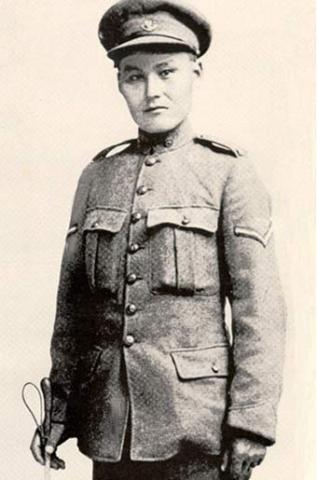
Introduction
Patience and precision are key when you go hunting. John Shiwak learned this valuable lesson growing up in Labrador. There, he grew up in ancestral Inuit tradition and became an expert outdoorsman. Ammunition was often in short supply in the wilds of northern Canada. This forced Shiwak to become an excellent sharpshooter. The skills he developed living off the land served him well in the military.
Early life
John Shiwak was born in 1889 in Cul-de-Sac, a tiny settlement near Rigolet, Labrador. He was the eldest son of John and Sarah Oliver Shiwak. The family’s surname was originally Sikoak, which means “relating to thin ice” in the Inuk language. Its spelling was later changed when it was recorded by a local doctor.
John got his first taste of military life as a young man. He took part in exercises organized by the Legion of Frontiersmen. This organization was founded after the South African War to help defend the British Empire. Curious and adventurous, John wanted to explore the world. The First World War provided him the opportunity to travel overseas.
Volunteering for service
During the early 1900s, news travelled slowly in remote areas. Radio and telephones were not common. It was weeks before most people in Labrador even knew the First World War had begun. John and a few friends travelled the long distance to St. John’s to sign-up with the Newfoundland Regiment. He enlisted in July 1915. According to John’s military records, he was 26 years old, 5’ 5” (165 centimetres) tall, single and was working as a trapper. He named his mother, Sarah, as his next-of-kin. His service number was 1735.
Travel from Newfoundland to Europe
John and a group of fellow new recruits left St. John’s on 27 October 1915. They travelled by train and boat to Quebec City. There, they joined a large group of Canadian soldiers waiting to leave for Europe. Their convoy of ships set sail a few days later for Devonport, England. They safely made the trip across the Atlantic Ocean, arriving in the United Kingdom on November 9.
Training, deployment to the front and injury
John trained for several months in Ayr, Scotland. He finally joined the Newfoundland Regiment on the front lines in France on 24 July 1916. John’s long experience in hunting and trapping made him an excellent scout. He quickly became known as a gifted sniper. He was the best in his regiment and perhaps even in the whole British 29th Division. But the Western Front was a tough place to stay healthy. John required treatment for an infection in his head in early October 1916 and needed three weeks to recover. He was promoted to Lance Corporal in April 1917.
Battle of Cambrai and fighting at Masnières
The Allies went on the offensive on the Western Front in the fall of 1917. They targeted Cambrai, France, which was a major German supply centre. The 29th British Division, including soldiers of the Newfoundland Regiment, were assigned to capture a part of the St. Quentin Canal, near the village of Masnières. Their mission was part of a larger assault on the enemy’s Hindenburg Line.
The 29th Division advance started the morning of 20 November 1917. The Newfoundlanders encountered some resistance but reached their first battlefield objective by 1:30 p.m. At dusk, the Newfoundlanders had made it to the outskirts of Masnières. The fighting to free the village continued through the night.
The next morning, John and his fellow members of the Newfoundland Regiment were ordered to take up a position on the other side of Masnières. Their goal was to secure a sugar factory for use as a Battalion headquarters. Unfortunately, a German artillery shell hit a group of Newfoundlanders as they moved along the canal bank. Seven of them were killed by the explosion—including John Shiwak.
Burial and tribute
John’s comrades quickly buried John in a temporary grave close to where he had died. However, fighting in the area continued. Ongoing artillery shelling re-shaped the local landscape. It erased all traces of his grave. Military efforts after the war to find it were unsuccessful. As a result, Shiwak’s name was engraved on the bronze plaques at the Beaumont-Hamel Newfoundland Memorial. The names of more than 800 other Newfoundlanders who died in the First World War and have no known grave are on the memorial.
But Shiwak’s history continued. Using archival research, modern historians located where John and the six other soldiers killed by an artillery shell that day are buried. Researchers determined their final resting place is likely under the site of a present day school in Masnières. In 2023, the local inhabitants dedicated a plaque in John’s memory. To respect his culture, the text tells his story and honours his memory in English, Inuktitut and French.

Commemorative plaque unveiled on June 30, 2023 in Masnières, France.
Photo courtesy of the town of Masnières
John Shiwak’s story lives on in the hearts of his family, his province and the people of Masnières. Together, they are making sure he is never forgotten.